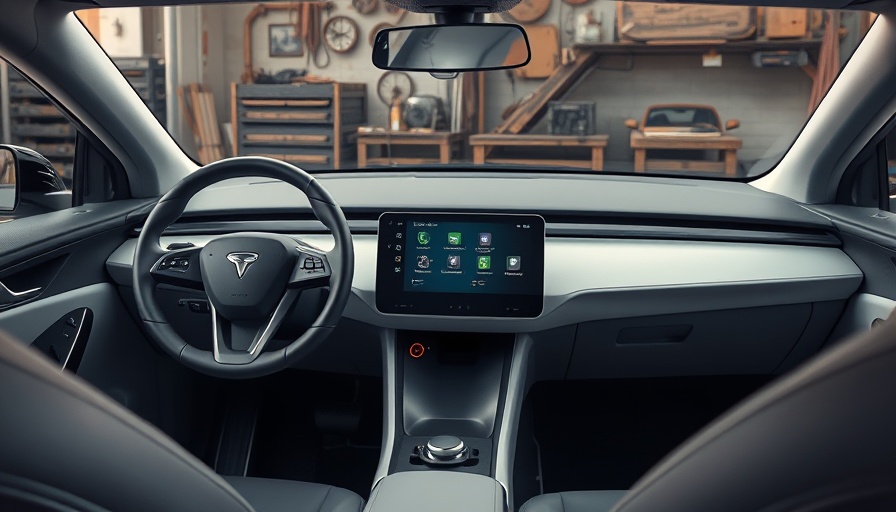
Everything You Need to Know About the Slate Truck
In a world where electric vehicles (EVs) are steadily becoming a key player in the automotive landscape, the advent of the Slate Truck has aroused interest among both tech enthusiasts and potential consumers. This new startup, backed by Jeff Bezos, aims to offer an affordable EV option that could transform how we think about transportation.
What Makes the Slate Truck Unique?
The Slate Truck positions itself as a versatile vehicle, available at an astonishing starting price of under $20,000 after federal incentives. With a simple design philosophy, Slate promises customization options that don't just limit themselves to being a truck. For a small fee, buyers can convert their Truck into a five-seat SUV, making it a two-in-one solution for drivers seeking both utility and comfort.
Impressive Specs of the Slate Truck
Let’s talk specs. The Slate Truck is built with utility in mind, featuring a lightweight frame at just 3,602 lbs. It sports a rear-wheel-drive system powered by a single electric motor that delivers 201 horsepower and 195 pound-feet of torque. With a range of 150 miles on its 52.7 kWh battery, it offers charging capabilities that ensure convenience, taking only 30 minutes to charge from 20% to 80% at fast charging stations.
Future of Electric Vehicles: A Adaptable Design
What sets the Slate Truck apart is its adaptability. It comes with a ”flat-pack accessory SUV kit” that allows users to transform the vehicle's body style, making it a unique player in the EV market. Not only does this allow for customization, but it also reflects a broader trend towards multifunctional vehicles in an age where consumer preferences are rapidly evolving.
Why Is Customization Important?
Customization has become a significant trend among consumers who want vehicles that fit their lifestyles. Slate's idea of a “blank slate” vehicle—one that can be wrapped in different materials and transformed into various styles—caters to modern buyers who value individuality. This resonates particularly well with younger audiences who are looking for vehicles that match their personal brands and lifestyles.
Cost-Efficiency and Sustainability
Given the growing concerns surrounding climate change, the lower cost of the Slate Truck makes it an attractive option for eco-conscious consumers. Its pricing strategy, as well as the option to build a sustainable vehicle that meets varying needs, speaks volumes about the direction the automotive industry is heading toward sustainability. As consumers become more focused on their carbon footprint, vehicles like the Slate Truck may become more desirable.
The Tesla Effect: Competition in the EV Market
As consumers weigh their options, the presence of companies like Tesla creates a competitive landscape that pushes innovation. With several features similar to Tesla models yet at a fraction of the price, the Slate Truck stands to compete fiercely against current market leaders. This competition could ultimately lead to reduced prices across the board and continued advancements in electric vehicle technology.
Fueling the Future of Transportation
The introduction of the Slate Truck symbolizes more than just another vehicle; it represents a shifting paradigm in the automotive industry. By combining affordability, customization, and eco-friendliness, Slate may be on the verge of heralding a new era for electric vehicles that doesn’t just appeal to high-income buyers, but to a wide audience seeking everyday practicality.
In conclusion, as we see more companies responding to the demand for affordable electric vehicles, Slate’s offerings could spark significant changes in how consumers approach both buying decisions and day-to-day transportation needs. With its innovative approach and competitive pricing, the Slate Truck could soon become a household name among electric pickups and SUVs.
 Add Row
Add Row  Add
Add 




Write A Comment